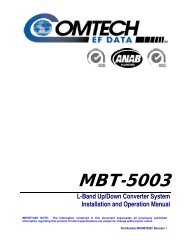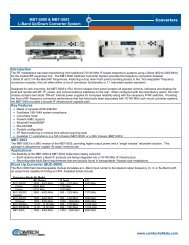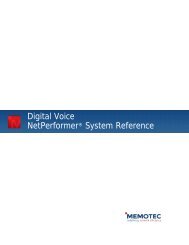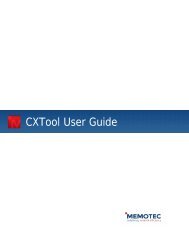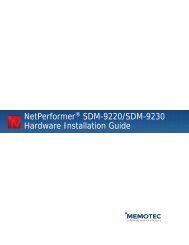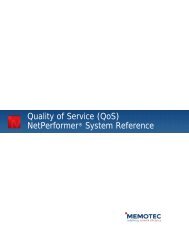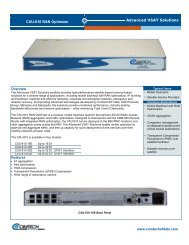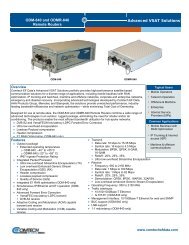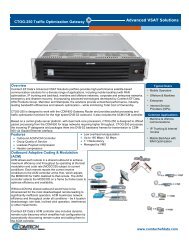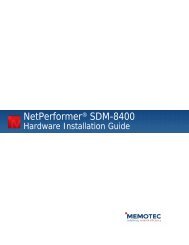ATM Option System Reference - Comtech EF Data
ATM Option System Reference - Comtech EF Data
ATM Option System Reference - Comtech EF Data
Create successful ePaper yourself
Turn your PDF publications into a flip-book with our unique Google optimized e-Paper software.
Product Overview<br />
and higher capacity are a result of:<br />
• Uniform cell size, which facilitates both transmission and switching,<br />
• Reduced flow control and error handling requirements.<br />
1.1.2 <strong>ATM</strong> Layers and Sublayers<br />
<strong>ATM</strong> works through three distinct layers as it processes and transmits data from one end of<br />
the user application to the other:<br />
• <strong>ATM</strong> Adaptation Layer (AAL), where data from a user application is segmented<br />
to proper length and some control and housekeeping features are added to<br />
make a 48-octet payload.<br />
• <strong>ATM</strong> Layer, where a 5-octet header is attached to the payload.<br />
• Physical Layer, which handles the interface to the transmission media.<br />
The steps are reversed at the receiving unit:<br />
• The cell is passed upward from the physical layer to the <strong>ATM</strong> layer, which<br />
removes the 5-octet header.<br />
• From the <strong>ATM</strong> layer the cell goes to the AAL layer, where the payload is reassembled<br />
and passed up to the user layer.<br />
The AAL has two sublayers:<br />
• Convergence Sublayer (CS), which processes the user data according to the<br />
required AAL service class.<br />
• Segmentation and Reassembly Sublayer (SAR), which fragments the data<br />
units at the transmitting end so that they can be packaged as a fixed-sized payload.<br />
At the receiving end, the SAR reassembles the payloads from several cells<br />
back into the high-level protocol units.<br />
Memotec Inc. 1-3



